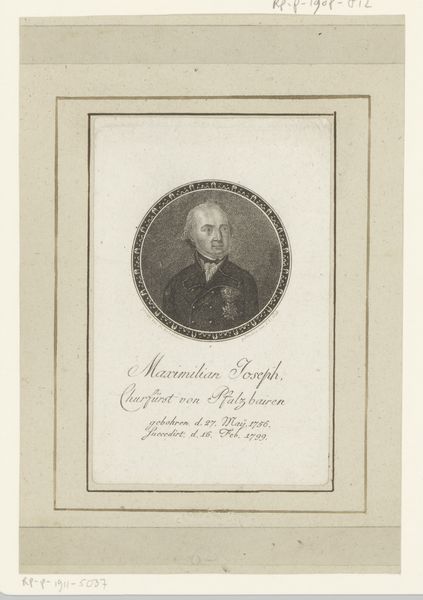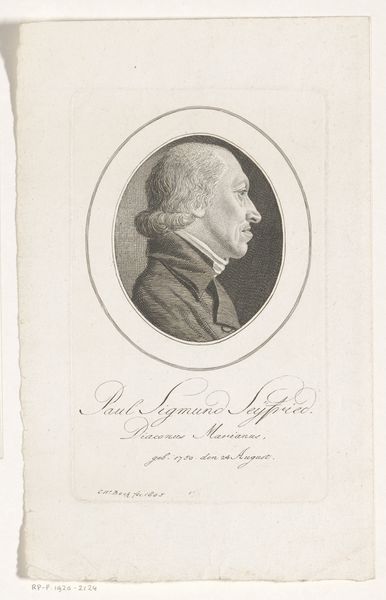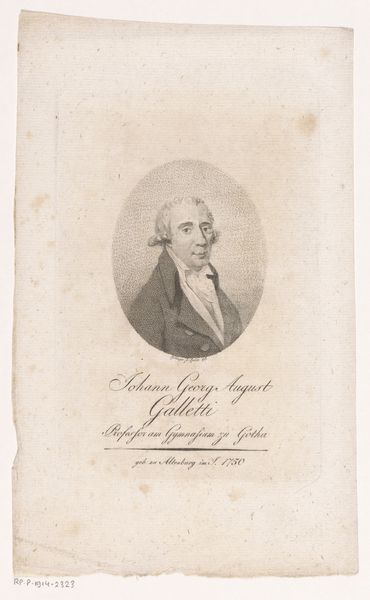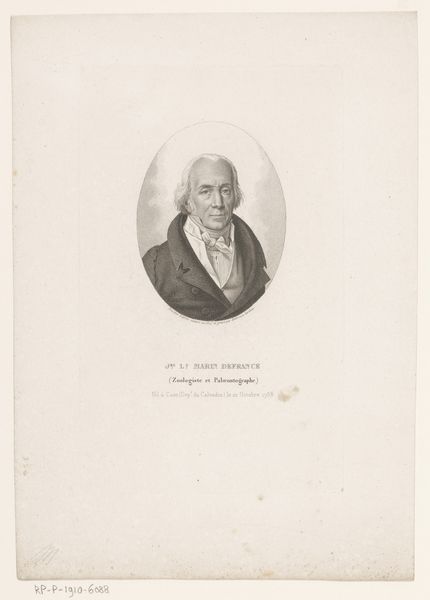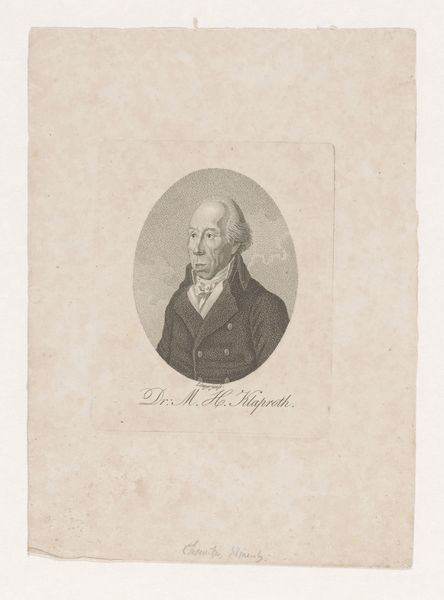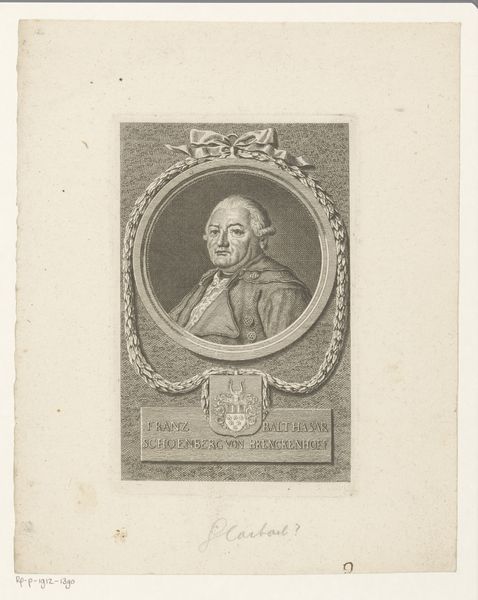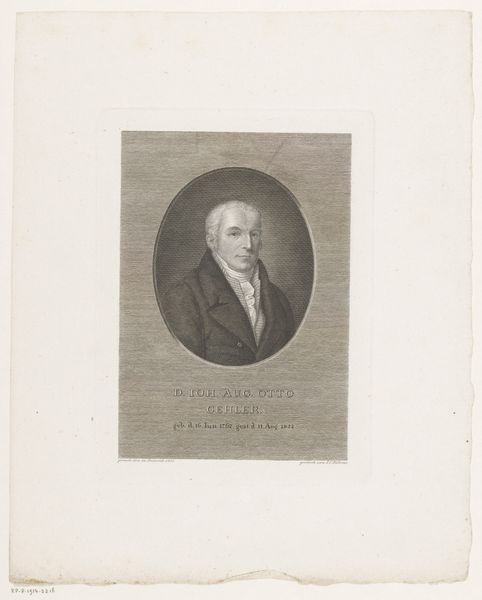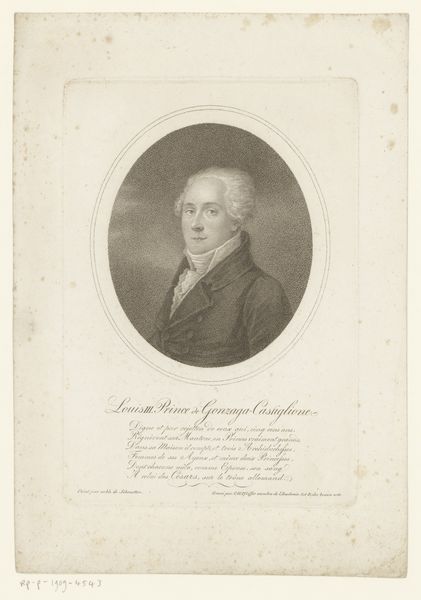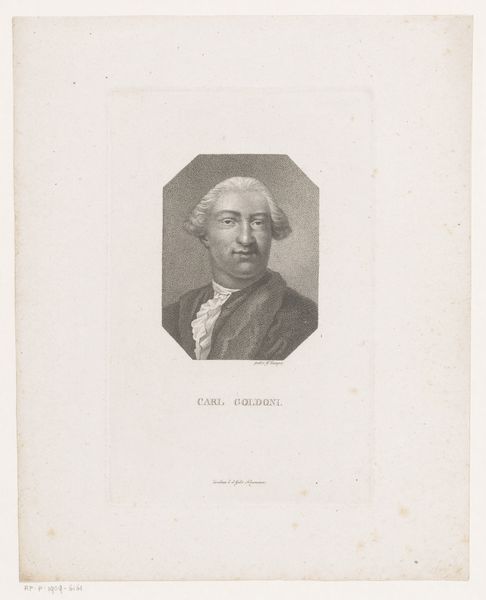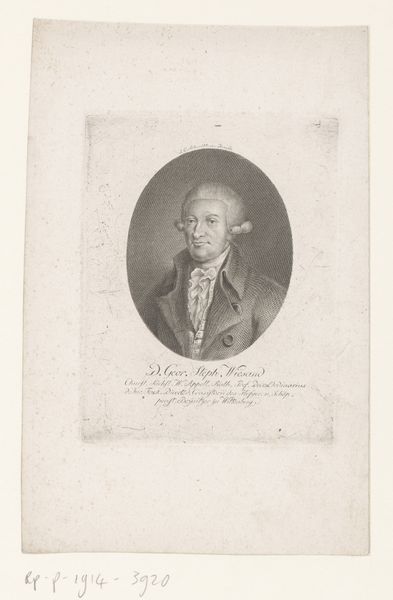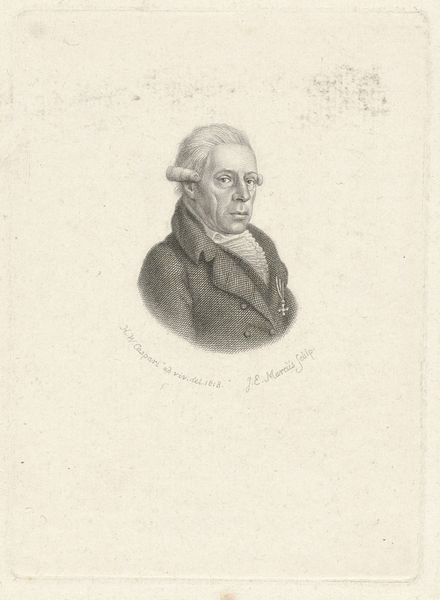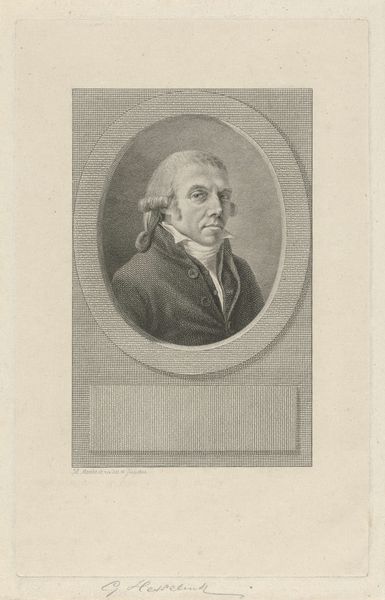
print, engraving
#
portrait
#
pencil drawn
# print
#
pencil sketch
#
engraving
Dimensions: height 159 mm, width 105 mm
Copyright: Rijks Museum: Open Domain
Curator: Here we have a print, an engraving specifically, depicting "Portret van Peter Godeffroy," dating between 1785 and 1858. Editor: It's austere. The portrait’s contained within a circle, feels a bit like peering into a historical snow globe. He looks serious, formal, definitely a man of some means. Curator: Absolutely. Godeffroy was a prominent banker in Hamburg. The portrait provides insight into the powerful merchant class of the era. His gaze seems to capture a historical shift towards capitalism, colonial power, and mercantile exchange, of which Godeffroy himself was an active partaker. The subtle textures in the engraving and the sharp contrasts amplify his confident stare, emblematic of a man aware of his place in society. Editor: I see the trappings of status: the tightly wound cravat, the tailored jacket, and the faint suggestion of powdered hair – symbols of order, discipline, and privilege. Look closely at his face, though, there's a kind of placid openness. Maybe this refers back to those enlightenment ideals—reason, balance and naturalism that mark so much late eighteenth-century representation. The portrait presents him in a sort of virtuous simplicity. Curator: It is fascinating to examine this from an intersectional lens, considering the source of Godeffroy's wealth in relation to gender, race, and social economics. It’s critical to assess the structures enabling his success, especially concerning exploitative mercantile routes from colonized regions. Editor: Precisely. We could unpack the visual symbols related to mercantile trade –the globe, perhaps charts and instruments absent here, and all connected to expanding commerce across waters – revealing the iconography that fueled ambitions and expansion in that age. This is also reinforced through composition with its clear-cut symmetry reflecting notions of established authority. Curator: Absolutely, placing this portrait within the complex web of power is essential for meaningful engagement. It makes you consider what and who were obscured to ensure his comfort and posterity. Editor: It also drives home how persistent these archetypes of status and success continue to be in contemporary portraiture, and how portraits, even in the medium of engraving, reflect an on-going projection of wealth in a long line of symbolic presentation. Curator: Precisely, viewing historical portraits through contemporary social criticism makes us interrogate deeply ingrained inequities in representation and success, pushing for dialogues to be more comprehensive in today's cultural spaces.
Comments
No comments
Be the first to comment and join the conversation on the ultimate creative platform.
